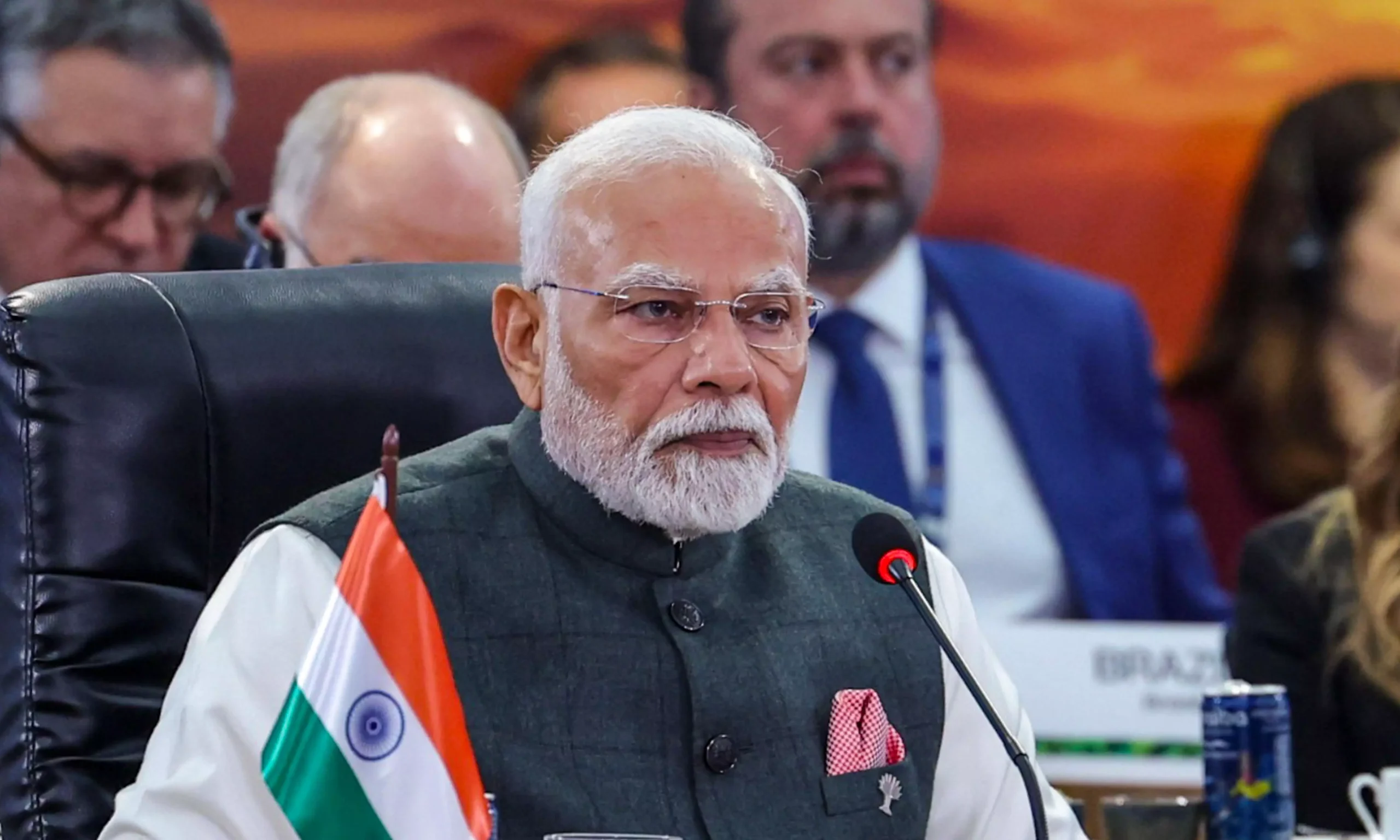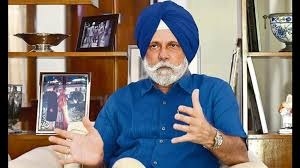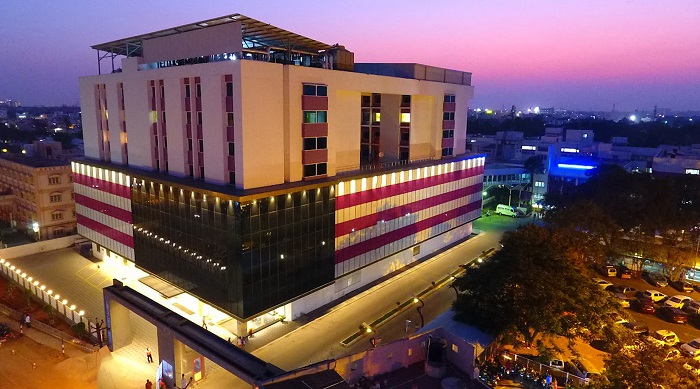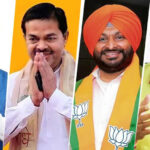Reg No. - CHHBIL/2010/41479ISSN - 2582-919X
BRICS, Mini-Nam Balance Amid the New Bipolarity-BY-K.C. Singh

Prime Minister Narendra Modi at the BRICS Summit 2025, in Rio de Janeiro, Brazil-photo Credit -PTI
Rio Declaration signals unity amid US pressure and global fragmentation
About the Author :The writer is a former secretary in the external affairs ministry.

K C Singh
The 126-paragraph Rio de Janeiro Declaration, issued on July 6, leaves no issue affecting the emerging and developing economies uncovered. US President Donald Trump’s shadow lingered over the summit, but his threat of higher tariffs on any nation adopting an anti-American position made it tangible. The declaration avoids naming the United States, but it addresses the issues arising from Mr Trump’s disruptive stance.
Brics, a group of initially four and then five countries, when South Africa joined, all emerging economies from different continents, was founded in 2009. It seeks to promote “mutual respect, and understanding, sovereign equality, solidarity, democracy, openness, inclusiveness, collaboration and consensus”. Three pillars are identified as: political and security; economic and financial; cultural and people-to-
people cooperation. It seeks “peace, a more representative and fairer international order, a reinvigorated and reformed multilateral system, sustainable development, and inclusive growth”. The sheer ambition of these objectives is head-spinning.
With the dominant power, the US, disrupting the existing order governing trade, security and international finance, some norm-setting was essential. Strategic thinker Joseph Nye says the group faces “intra-organisational rivalries”. The 2020 India-China armed hostilities across the Line of Actual Control, starting with Chinese intrusion at Galvan, is one example. Similarly, the February 2022 invasion of Ukraine by Russia, with the war still going on, has forced the group’s members to balance diplomatically between Russia and Ukraine, the latter
upported by Western nations, including the US. Also persisting is the Gaza war, triggered by Hamas’ lethal attack on Israelis around Gaza on October 7, 2023.
Finally, the Israeli air attacks on Iran, starting June 13, with the US pitching in and dropping “bunker-buster” bombs on three strategic Iranian nuclear facilities, complicated the scenario. The Brics summit had to address these developments, but without provoking the US.
The declaration has five sub-headings on diverse themes. It begins with: “Strengthening Multilateralism and Reforming Global Governance”. It maintains that contemporary power realities are not reflected in the multilateral organisations. The rivalries amongst BRICS members affect this debate. While China and India agree that shareholding in the World Bank and the International Monetary Fund (IMF) needs review, their interests diverge over the UN Security Council reform. The current host Brazil and India are part of a four-nation group, along with Germany and Japan, which lobbies for additional permanent members in the UNSC. China only favours a “greater role”, short of permanent membership, for new aspirants. However, there was consensus for WHO to have robust funding to handle future global health challenges. President Donald Trump withdrew the US from WHO on January 20, 2025.
The next theme is: “Promoting Peace, Security and International Stability”. The existing conflicts, global polarisation and fragmentation of the international order are addressed. The diversion of development funds to the defence sector is criticised. This targets the US urging the Nato members to raise their defence budgets. Mediation and preventive diplomacy are suggested. The military strikes on Iran, starting June 13, are described as violative of international law. A deliberate attack on civilian infrastructure, under IAEA safeguards, is called unacceptable. Iran, a new member supported by China and Russia, would have demanded this.
Terrorism is dubbed “criminal and unjustifiable”, regardless of motive. The Pahalgam attack is noted, but without naming Pakistan. All nations are urged to assume primary responsibility for terrorist attacks from their soil. The Brics Counter-Terrorism Workshop is mentioned and the Indian demand, since 1996, reiterated for a Comprehensive Convention on International Terrorism (CCIT) at the UN.
Ukraine posed a different dilemma due to the Russian role. The declaration refers to the national positions of different members, without criticising Russia. Regarding Palestine, a more aggressive anti-Israel position is adopted. The Israeli attacks on civilians in Gaza are termed violative of the international humanitarian law. A ceasefire is demanded, besides the withdrawal of the Israeli defence forces from the occupied territories. The release of hostages and detainees is desired. Gaza is specified as inseparable from occupied Palestinian territory.
The Palestinian right to self-determination is reiterated, besides an independent Palestinian state. Similarly, regarding Syria, where the US-Israel combine is mollycoddling the new Sunni government, a sovereign, independent and united Syria is sought. The danger of a revived Al Qaeda and ISIS again spreading terrorism regionally is observed.
The demand for a nuclear weapon-free Middle East, which Iran strongly advocates, is supported. This targets Israel’s right to nuclear weapons when other nations are denied even peaceful nuclear programmes.
Three other sub-themes are: “Deepening International Economic, Trade and Financial Cooperation”; “Combating Climate Change and Promoting Sustainable, Fair and Inclusive Development”; and “Partnership for the Promotion of Human, Social and Cultural Development”.
Brics’ primary focus has always been on economic and financial issues. President Trump’s tariff war on the global trading architecture, overseen by the World Trade Organisation, needs to be countered. Ironically, Mr Trump’s July 9 deadline for finalising trade deals coincided with the Rio summit. Unable to bully most interlocutors into signing trade deals, he has shifted the deadline to August 1.
Ideally, Brics could become an alternative trading bloc, with each member reducing dependence on the US market. But mutual rivalries hamper that. The declaration proposes cooperation to regulate Artificial Intelligence, encourage a Partnership on New Industrial Development, the use of robotics, digital technology, next generation communications, etc.
India managed to slip in “national food reserves” under food security. That is one of the sticking points in the India-US trade deal. Prime Minister Narendra Modi addressed the session on “Environment, COP30 and Global Health”. India, he said, abided by the Paris Agreement commitments on schedule.
The overall objectives are not achievable, he added, without facilitated technology transfers and affordable financing. President Trump, instead, has an anti-climate change agenda. He is withdrawing incentives for electric vehicles and green energy. Brazilian President Lula da Silva, attacking President Trump’s threat of tariffs on the Brics countries, asserted that “we are sovereign nations” and can impose tariffs too.
The United States announced supplementary tariffs on 15 nations, excluding India. It feels like a Cold War déjà vu. The Non-Aligned Movement (NAM) was created to escape the Soviet-US rivalry. After the Cold War, India had hoped for a multipolar world. But now, a new bipolarity is emerging, between the US and the China-Russia combine. Pakistan and Bangladesh are successfully playing both sides.
India’s hopes of perennial American support, with New Delhi balancing China’s rise or moderating SCO and Brics, looks highly debatable. The government needs to recalibrate its diplomacy and the BJP its majoritarian domestic politics, to successfully chair the next Brics summit in India.
( Source : DC )
YOU MAY LIKE THIS










